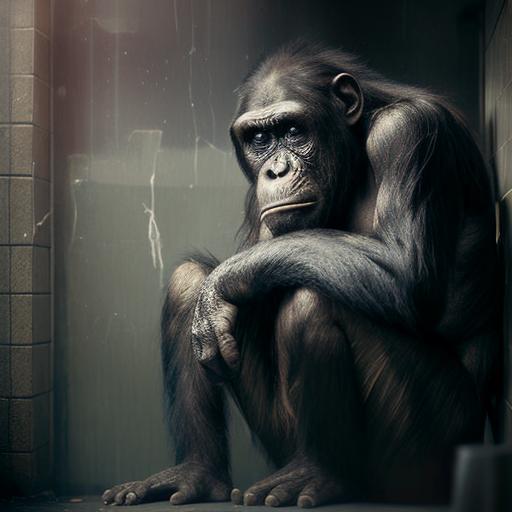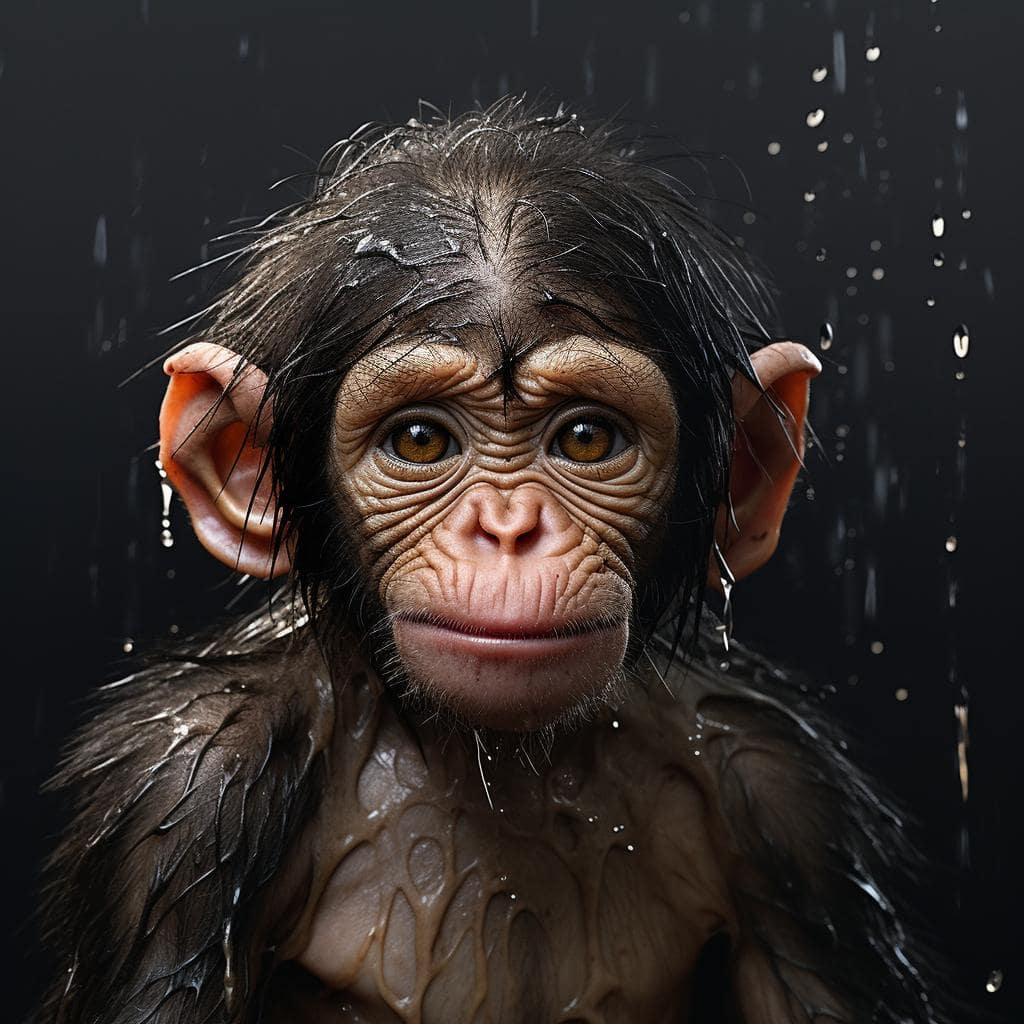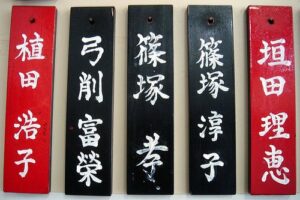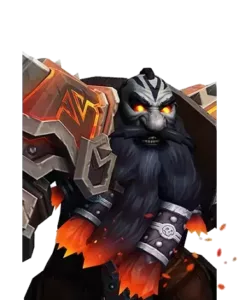
A Comprehensive Guide to Monkey Names
Monkeys are mammals commonly found in humid and tropical countries. They belong to the family order of Primates, one of the most diverse groups of mammals existing in the world today. Monkeys are often distinguished for their human-like features such as a round-face skull, grasping hands, and their dependence on vision instead of smell. What differentiates them is their long tail, furry bodies, and smaller size.
Learn more about monkeys and their brief history and description by reading through this comprehensive guide to creating a name for a Monkey. Plus, get to know more about the scientific terms associated with Monkey names including their meaning and usage. We’re as excited as you so read on!
-
Imani
-
Olive
-
Indigo
-
Sammy
-
Mowgli
-
Rocco

Monkeys: The Distant Cousins of Humans
The Primate Order of Mammals is subdivided into two families: The Strepsirrhines (family of lemurs, lorisids, and pottos) and the Haplorrhines (family of tarsiers and simians). The strepsirrhines and tarsiers are classified as a lower type of primates, while the simians are considered the “higher primates”. This is mainly due to the difference in intelligence due to simians having a much larger brain than the tarsiers and strepsirrhines.
The Simian family can be subdivided again into two subgroups: the Catarrhines (consisting of Hominidae and Catarrhini or Old World Monkeys) and the Platyrrhines (New World Monkeys). The Hominidae are the branching family for Apes and Humans, while the Catarrhini and Platyrrhines are specific for monkeys. To put it simply, Monkeys are classified into Old World Monkeys and New World Monkeys, with Humans and Apes acting as their distant cousins under the Primate Order of Mammals.
Scientific Naming Convention on Monkeys
One of the surprising facts about Monkeys is the chosen naming convention for them by scientists—through the shape of their noses! Although scientific terms used to identify the members of the Primate family are different. For example, the term Cercopithecidae is another term for a superfamily of Old World Monkeys derived from Cercopithecus which means “longtailed” Ape. Hominoidea is a combination of the Greek term homo and -idea, which means “human” or “human-like”.
Scientific terms for Monkeys, on the other hand, often use definitions about the nose shape of the Monkey variant. For example, the term Strepsirrhini is derived from the Greek words strepsis (a turnaround) and rhis (nose), referring to the appearance of comma-shaped nostrils from lemurs and similar species. Another example is the term Haplorrhinis. It is derived from the Greek words haplos, meaning “single” or “simple” and rhis or rhinos meaning “nose”.
The Old World and New World Monkeys
The term “Old World Monkey” was based on the grouping made by French Zoologist Étienne Geoffroy Saint-Hilaire in 1812. He used the term Catarrhini, a Greek term meaning “down nose” to categorize all monkeys having nostrils facing downwards. On the other hand, the “New World Monkey” was coined Platyrrhini (flat nose) to categorize all monkeys with flat nostrils.
A few examples of Monkey species under the Old World Monkey category are baboons, macaques, mandrills, guenons, langurs, and proboscis. New World Monkeys include marmosets, tamarins, squirrel monkeys, howlers, night monkeys, spider monkeys, and uakaris.
Difference Between Monkeys and Apes
Although coming from the same Primate family, Monkeys and Apes are set apart and different from each other. Monkeys are easily identified for their long tails—which is nonexistent on Apes. Monkeys are much smaller compared to Apes. They have narrower shoulders and chests which makes them lighter, making hopping and clinging between thin tree branches easy. Apes, on the other hand, have much broader chests, heavier bodies, and wider shoulder joints. This gives them the ability to use their hands and arms to swing freely through trees instead of hopping and perching on branches.
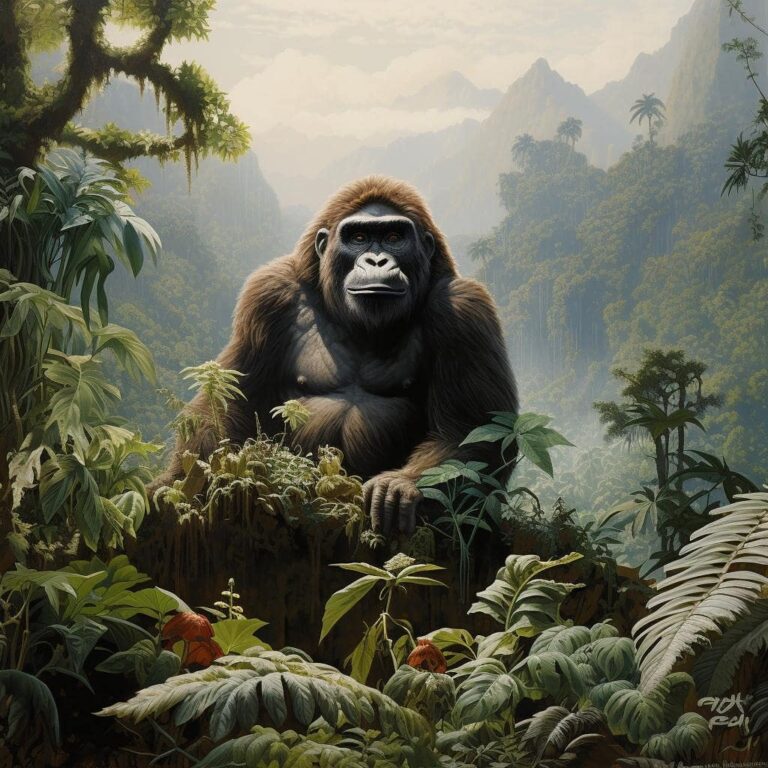
Popular Monkey Names in Pop Culture
Monkeys are not new in pop culture. They are one of the common animals often featured in films, comics, cartoons, and novels. Monkeys being featured in different media gave different impressions to people regarding Monkeys. Some films depict Monkeys as intelligent creatures next to humans. They can think or act rationally and may be able to talk in the future. Other films depict Monkeys as savage creatures that can come together to rebel against humanity. Regardless of the context of how Monkeys are used in these stories and films, monkeys are truly one of the best animal choices that authors use in their character creation and stories. Check out some of the most popular Monkey names used in pop culture below.
Rafiki (The Lion King – 1994)
Rafiki is a mandrill Monkey who serves as a shaman and Royal Mijuzi for the Pride Lands monarchy. He is a supporting character, often described as being full of wisdom and a deep affinity to magical and spiritual elements. He is the most trusted advisor and friend of King Mufasa, the leader of the Pride Lands.
Rafiki is most notably remembered as the Monkey who anointed Simba for a “Pride” ceremony. We always remember him raising Simba with both hands atop the Pride Rock, showing the heir to the throne to all the animals in the Pride Lands.
In the Lion King Film, Rafiki is depicted as a wise advisor, thus representing Monkeys as beings with high intellectual capacity.
King Louie (The Jungle Book – 1967)
King Louie was an added character by Walt Disney in the animated movie of The Jungle Book. He is a rowdy orangutan crowned as the King of the Apes. He enjoys a lavish lifestyle and lives according to his will and order. He is selfish, lazy, and not loyal to any of his constituents. Despite this, he does not cause any harm to other animals, or even to Mowgli, which he kidnapped.
King Louie is well remembered by kids as the jazz-loving orangutan. He loves celebrations and parties and likes to feast on an endless supply of bananas. The early depiction of orangutans in The Jungle Book films gave children a stereotype of Monkeys and Apes loving bananas over any other fruit. This is not entirely true in real-life as Monkeys and apes eat any variety of fruits and insects.
Curious George (Curious George – 1941)
Curious George is a popular children’s book character by Margret Elizabeth Rey and Hans Augusto Rey. He is described as an adorable and kind little Monkey with lots of curiosity. The first book of Curious George was published in 1941. It entails the story of George being captured by the Man with the Yellow Hat and brought to America (The Big City) to be caged in a zoo. However, George and the Man with the Yellow Hat became friends and started to go on adventures together.
The Curious George series touched the interest and hearts of most kids in the 50s until the 90s. George being a Monkey on an adventure, gave children colorful and imaginative thinking about going out and trying new things. Through this children’s show, young audiences are taught basic skills and curiosities that are child-safe and entertaining.
Mojo Jojo (The Powerpuff Girls – 1998)
The Powerpuff Girls is a superhero-themed children’s show about three young girls artificially made by The Professor. While most of the episodes of The Powerpuff Girls are standalone, there is one plot scenario explaining the creation of one of its archenemy villains of the girls—Mojo Jojo. Mojo Jojo is the main villain of the show who constantly plots to take over the world and destroy the Powerpuff Girls.
Mojo Jojo was originally named “Jojo”. He was the Professor’s lab assistant who always broke anything in the lab. During the creation of the Powerpuff Girls, he accidentally pushed the Professor’s arm, hitting a chemical named Chemical X. This spilled into the mixture, which created the Powerpuff Girls, giving them superpowers and abilities. However, this same chemical spilled on Jojo’s eyes, mutating his DNA, and gradually enlarging his brain and causing his skin to turn green. He became intelligent and gained human emotions and consciousness. Due to Professor’s neglect of Jojo after the incident, he became jealous of the Powerpuff Girls and started to scorn them, promising their destruction in the future.
Mojo Jojo is a direct representation of the idea that a Monkey with sufficient intelligence can break free of human control and may start to rebel. It also gives perspectives to Monkeys having human emotions, feeling neglect and jealousy.
Abu (Aladdin – 1992)
Abu is the mischievous pet Monkey of Aladdin from the Disney Film Aladdin. He acts as the loyal “partner-in-crime” of Aladdin throughout the story. Abu first worked for a gang of traveling thieves and serves as the gang’s pickpocket. He met Aladdin after attempting to pickpocket his money which end up failing. They became friends after the incident.
Abu is animated and designed after a real-life tufted capuchin Monkey.
Naming Pet Monkeys
You were able to get to know more about Monkeys and get acquainted with some of the famous names of Monkeys in pop culture. Now it’s your turn to create Monkey names for pet Monkeys—if you have one or want one.
When you name a Monkey, it is important to consider either of the following: its appearance, its behavior, or both. By considering these two categories, you can easily come up with names. The easiest way to create a name for a Monkey is by looking at its appearance. Does the Monkey have a long tail? Does it have a fur pattern? A scar? Or a distinct eye color? Try to observe your pet Monkey and come up with possible names based on their physical characteristics.
Monkey Names Based on Appearance
- Big Dude
- White Chin
- Baldy
- Snout
- Blacky
- Winkie
- Pouty
- Dopey
- Blemish
- Fuzzy
The second easy way in naming Monkeys is by creating names based on their behavior. Behaviors such as being frantic, easily surprised, or sweet are a few of the behaviors you can use to create Monkey names.
Monkey Names Based on Behavior
- Sweetie
- Cuddly
- Grumpy
- Jiggles
- Goofy
- Meek
- Sleepy
- Dash
- Scratches
- Lovely
Other Monkey Names
You may also draw inspiration from other sources to create unique Monkey names. You can use real-life people’s names or use names from food or other adorable things. Below are a few examples.
- Maple – A Monkey name based on the Maple tree.
- Bingo – Based on the Bingo game. This name is a generic pet name and may also work for other pets such as dogs, cats, or birds.
- Einstein – Based on Albert Einstein. This Monkey name is perfect for a highly intelligent or talented pet Monkey.
- Midnight – Ideal for black-colored pet Monkeys.
- Cola – an alternative name for black-colored Monkeys.
- Oakley – This Monkey name works well for Monkeys because of the inclusion of the word “Oak”.
- Coconut – A cute Monkey name that you can give to a fruit-loving Monkey friend.
- Chimp – This name can also be Chip, a short term for chimpanzees.
- Twiggy – Derived from the base word twig, which is also associated with trees as much as trees are associated with Monkeys.
- Anton – This is just a random and generic name that is on point when used as a Monkey name.
Wrapping Things Up!
To sum up your adventure with us about Monkey information and names, we highlighted some of the key details that you might as well remember after reading.
Monkeys belong to the Simian superfamily of Primates. This Simian family is called “higher Primates” due to their intellect capabilities and larger brains.
The Simian family is divided into Catarrhines, consisting of the Hominidae (humans and apes) and the Catarrhini (Old World Monkeys), and the Platyrrhines, the New World Monkeys. They are distinguishable based on the shape of their nose. The Catarrhini have downward nostrils and the Platyrrhines have flat nostrils.
Apes differ from Monkeys in terms of their physical attributes and way of living. Apes have larger chests and broader shoulders which allows them to swing freely on tree branches instead of hopping and perching.
In giving a name to a pet Monkey, try considering its appearance and behavioral traits. You may also use other inspirations in creating Monkey names such as names of real people, food names, or other terms relating to Monkeys or Apes.
Table of Contents


